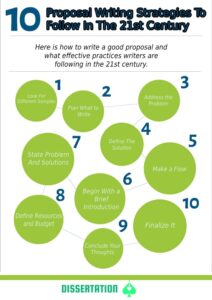A good proposal is what includes all the information explained concisely. It is a writing style where new inventions and their needs are defined. Generally, a proposal is written in the account of any significant problem representing its solution. Many businesses, educational institutes, and industries followed this write-up style. The purpose is to present and inform people about their plans and ideas and suggest solutions to the rising issues.

However, proposing an idea through write-ups is not easy. There are many things to consider, including the message, credibility of researched facts, proper addressing of the issues, and suggesting the right solution. Most importantly, your ideas and suggestions must be solid enough for a suitable solution.
Here is how to write a good proposal and what effective practices writers are following in the 21st century.
Table of Contents
Look For Different Samples
Writing is a vast field that includes different write-up styles designed for distinct purposes. Since proposals fall in that category, writers must look for various samples. Because they are written for science, business, academic projects, and much more. Each of these has different formats, inscription requirements, and guidelines.
Therefore, finding the relevant templates compatible with the type of project you are working on is mandatory. If you are still confused, you can take dissertation help from a reputable service provider. You will find plenty of standard patterns that match your thesis framework.
Plan What to Write
Who is your reader?
How to convince them?
What are their expectations?
Do they really agree with your ideas and suggestions?
All these are the common questions that every writer should consider before initiating their thoughts on the paper. At first, they need to think about the audience they are speaking to, know their niche, and set the tone accordingly. Secondly, they need to understand whether the readers are familiar with their topic or not. Keeping all these things in mind, one should plan what to write and make clear concepts in the audience’s mind.
Address the Problem
Since proposals address problems, the facts presenting the needs of a prior solution must be clear to your audience. The more you define issues clearly, the more chances you get to increase the authenticity of your prospects. Moreover, it’s essential to make sure the outlines you are presenting pinpoint the audience’s needs.
At the same time, they convince them to agree with your ideas. Many companies and students have solid facts for presenting their project ideas but fail to address them effectively. They can take inspiration from dissertations related to their topic.
Define The Solution
Now that you have addressed and made the audience about the problem, it’s time to solve it. Remember that your audience is not the most manageable crowd to win over; making others agree with your suggested solution is pretty hard. Make sure that your remedies are logical, fact-based, and feasible enough to cover all the gray areas. You need to conduct in-depth research and extract the appropriate antidotes as much as possible. It will help you end up with a paper and presents something really insightful.
Make a Flow
Once you get a clue to forward your ideas, you need to line up your thoughts to make a flow in your thesis framework. You can follow an easy-to-read writing style that helps target readers quickly get your point. We all know that scripting ideas on paper and making everyone understand is not an easy job. Writers must be very consistent in choosing different samples and outlining the composition. They need to give their best shot to end up with an excellent copy, explaining everything effectively.
Begin With a Brief Introduction
As you have created a pitch for your efforts, you must bring the crowd to your table. You might be thinking, how, right?
Your paper should start with an engaging line that immediately draws the reader’s attention. In this case, a brief introduction should be added that addresses readers about what the entire hypothesis is all about. What writers can do is make their drafts more purposeful so that they expose plenty of informative comprehensions.
You can add some background information and some facts related to previous findings. This information will add volume to your piece, making it very informational to your target audience.
If you have no idea how to take a creative start, you can take help from a research proposal writing services provider.
State Problem and Solutions
After a brief introduction, you will enter the document’s body. This is where you have to make all your efforts in. Here, proposers should state the problem. They need to mention all the issues and facts causing problems.
If the audience is not knowledgeable, you fill them in by presenting complete information. Make sections, pointers, and headings that fully explain everything. Whereas doing the same when stating the solution.
Though solutions are arguably the core of your hypothesis, addressing how the issues can be resolved. There are some theoretical analyses that you have to perform so that the suggested measure has enough weight to justify its relevance.
Define Resources and Budget
The proposal presents an investment, so it must include all the resources required. In addition, a budget should be shown in the draft to give a rough estimate of the entire investment.
It’s very common that when you are going to work on a new project, you think of resources and estimate how much you will spend on it. Similarly, when preparing a draft for the introduction, new product or even a business plan, a budget is required. It not only helps you in directing where to spend but helps you save costs for the next project.
Conclude Your Thoughts
This is where you end up with your hypothesis by concluding your thoughts. Your draft should wrap up your message with all the information written concisely. If you have some consequences of presenting, go with them. Moreover, you can add benefits, use cases, future directions, and new ideas to make the current research effort more authentic.
Finalize It
Revising your document repeatedly is one of the features of a good proposal. Editing, modifying, and adding more information is the best idea to end up with an admirable copy. Additionally, ask others to go through your write-up so that the final draft is error-free and rich with information.
The Bottom Line
Those mentioned above are some pro tips and strategies explaining how good proposals happen. However, various other approaches are used to present and write a research draft, but following these tips will do wonders. So go through them and give your best shot to propose your ideas in the best light.











